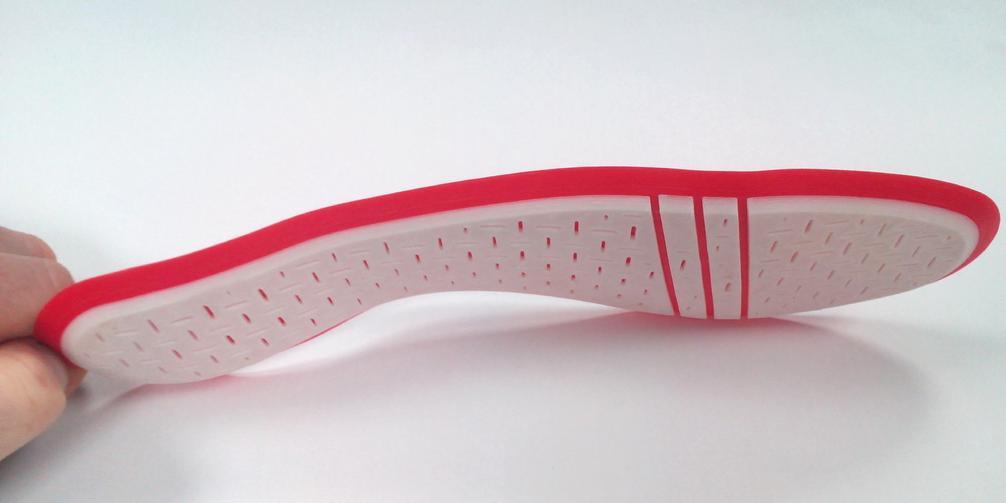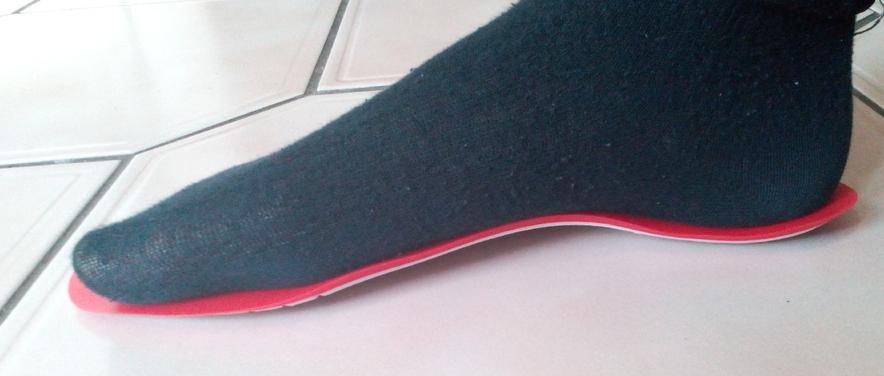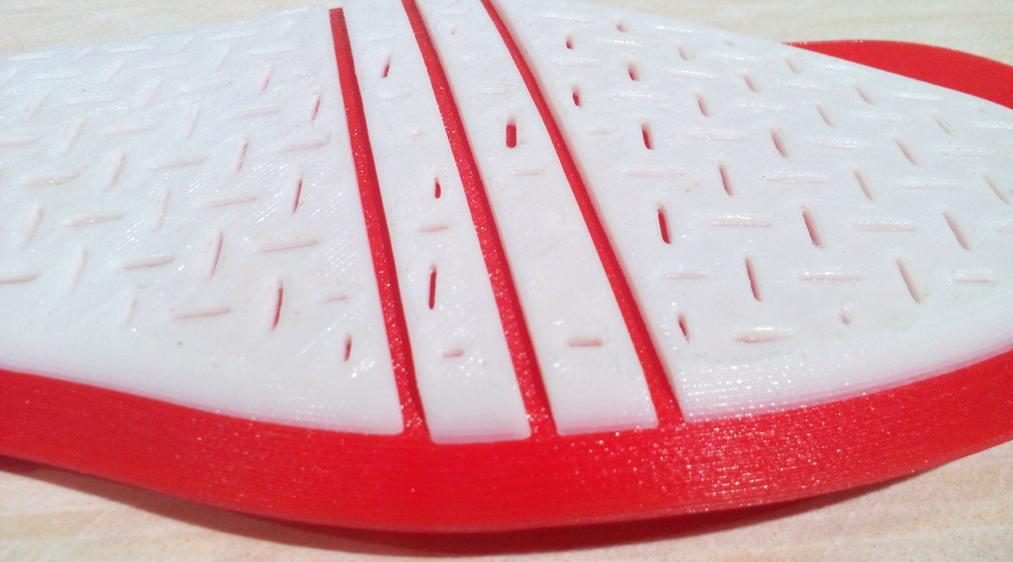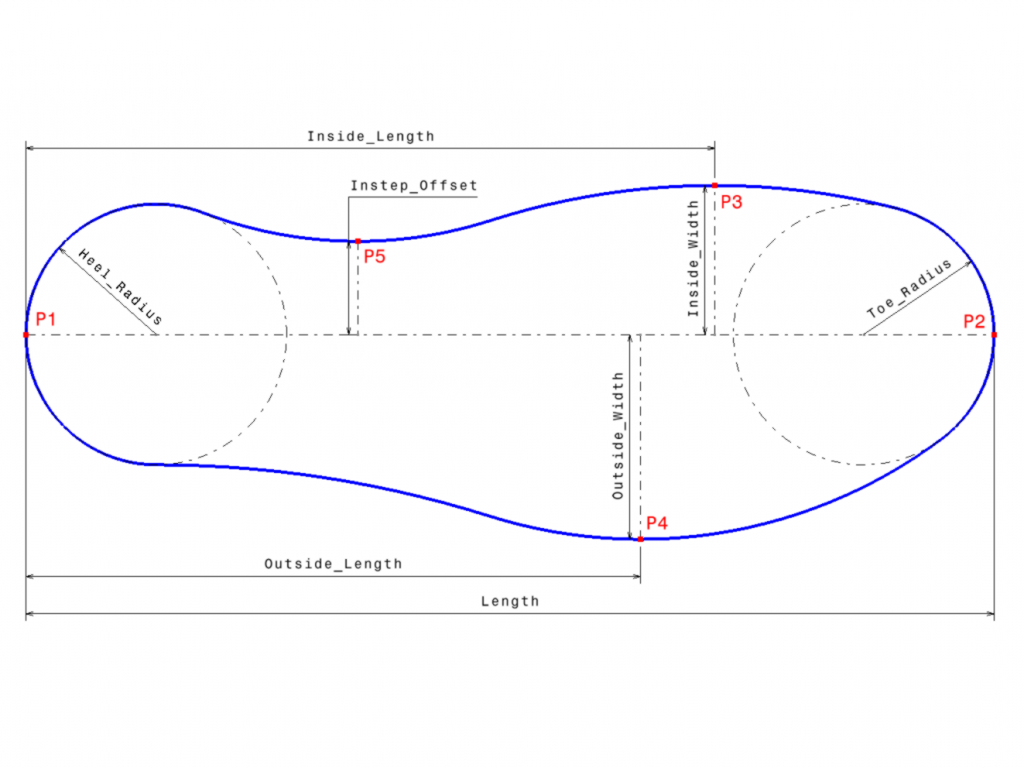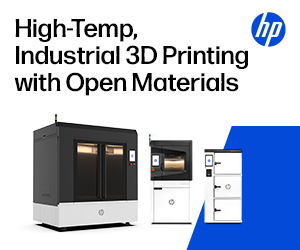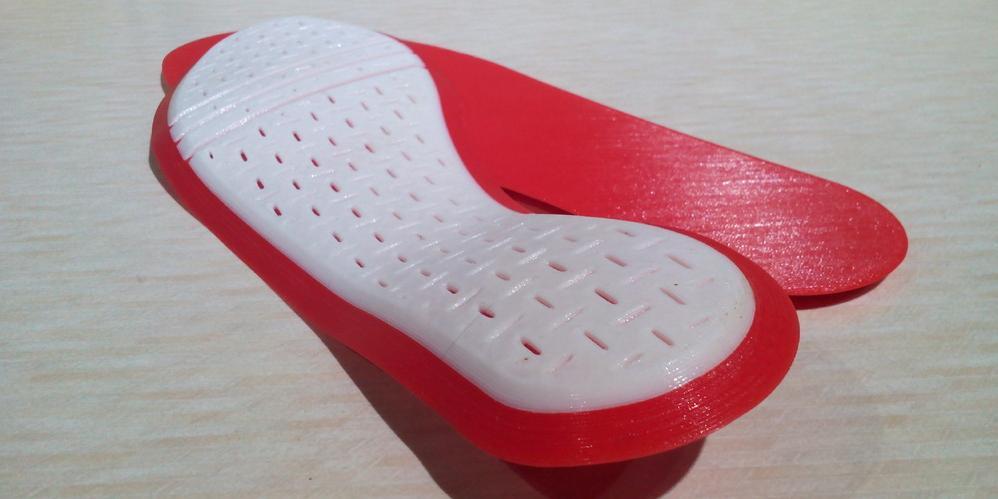 One of the areas in which we have begun to really see 3D printing start to infiltrate is that of custom footwear. Whether it be custom shoes, sneakers, shoe accessories, insoles, or orthotics, 3D printing has begun to show its true colors in enhancing the custom aspects available within the shoe design space.
One of the areas in which we have begun to really see 3D printing start to infiltrate is that of custom footwear. Whether it be custom shoes, sneakers, shoe accessories, insoles, or orthotics, 3D printing has begun to show its true colors in enhancing the custom aspects available within the shoe design space.
One man who has been making headlines a lot as of late, when it comes to 3D printing with flexible filament (particularly FilaFlex), is a man named Steve Wood. In Wood’s latest project, he decided to attempt to create a method of 3D printing completely custom insoles, which individuals and podiatrists could use. In contemplating his plan, Wood decided to utilize an interesting material property of PLA filament that most people within the 3D printing space usually ignore. Knowing that PLA softens when heated to 60 degrees Celsius, Wood had the idea of creating a 3D printed insole which when completely printed could be heated up and formed to an individual’s foot.
“This means it can be moulded and bent into a variety of shapes whilst hot and that shape is maintained when cool,” Wood tells 3DPrint.com. “A problem with FDM 3D printers is that they are much weaker in the Z layer direction, de-lamination of the layers is a common problem. This heatformable insole helps overcomes this weakness by creating the Z form afterwards, moulding it for a great fit to your own foot shape. The Z layers are gently curved and the stresses wanting to pull the layers apart are greatly reduced.”
Wood’s insole model is printed using both rigid PLA and the more flexible and forgiving FilaFlex filaments. The structure of the insole is printed in the hard plastic, while the padding with which the foot comes in contact is printed using the flexible material. This provides a rigid structure that when formed to the foot will create incredible support, yet a soft cushiony feel that will make you feel as though you are walking on a cloud.
Wood hasn’t only created design files for this insole, but he also created an OpenSCAD file, which allows many different parameters to be altered specifically to a wearer’s foot.
“A podiatrist looking to create an orthotic shoe insert for corrective measures can apply their skill and knowledge to create extra twists or bends for higher arch support etc.,” Wood tells us. “The thickness of the rigid material can be increased/decreased to give different flexibilities of [the] insole too. It is for these reasons that I offer the CAD freely to my podiatry friends as a possible solution that they can implement right at the chairside.”
Once the insole is 3D printed, Wood recommends carefully thermoforming it to the wearer’s foot. This is done via a method that can be a bit dangerous if not done correctly. He suggests heating up a pot of water until it boils, and then pouring the into a baking tray, with the 3D printed insole placed on top. After about 20 seconds or so, the insole should be carefully removed before forming it to the bottom of a person’s foot. That person should be wearing socks, to prevent the temperatures from causing a burn.
“I want to make the thermoforming process less ‘skill’ based and more reliable so I am reaching out to makers for inspiration that can be implemented cheaply and simply,” Wood explains. “I know thermoforming insoles are not new and that they are readily available to buy, however 3D printing them is, and so if you already have a printer then it’s another use to show that this technology is not just for plastic trinkets and baubles.”
Wood is a huge proponent of flexible filaments, and he really encourages manufacturers of 3D printers to ensure that their machines can handle printing with these materials. He foresees many more uses for these materials in the future, as more and more designers begin creating 3D printable products which take account for these readily available filaments.
It should be interesting to see just how many people use Wood’s OpenSCAD program and customize these insoles. Perhaps they will be able to add additional ideas to Wood’s creation as well.
“I have taken the complex multiple curvature profile of an insole and broke it down into a few basic geometrical arcs,” Wood tells us. “I then came up with a dimensioning strategy enabling makers to easily enter a set of parameters which will replicate this final shape. These parameters are available in the Thingiverse Customizer for anyone wishing to create a CAD model of an insole which will fit the internal shape of their shoe. There are 7 parameters (seen below) which control the profile and are easily measured from either an existing insole or a paper/card template made to fit inside the shoe first.”
What do you think about this unique customizer and the idea of combining 3D printing with thermoforming to create a new type of insole? Discuss in Flexy-Form Insole forum thread on 3DPB.com.
Subscribe to Our Email Newsletter
Stay up-to-date on all the latest news from the 3D printing industry and receive information and offers from third party vendors.
Print Services
Upload your 3D Models and get them printed quickly and efficiently.
You May Also Like
3D Printing News Briefs, December 27, 2025: Additive Construction in the U.S., Canada, & India
In this holiday weekend’s 3D Printing News Briefs, the focus is entirely on additive construction! We’ll start with news out of North America, specifically Canada and the United States, and...
A Sudden Turning Point: AM Research’s Q3 Offerings Dissect a Pivotal Three Months
One of the most reliable ways to stay updated on activity in the additive manufacturing (AM) industry is to subscribe to AM Research’s data services, available for both the polymer...
3D Printing Used to Make Prototype Plasma Camera Measuring Charged Particles in Space
Space is a vacuum, we’ve all heard that before. But that doesn’t mean it’s completely empty, just that it has an extremely low amount of particles and matter. Stars emit...
3D Printing News Briefs, December 17, 2025: Standards, Ballistics, Dental Aligners, & More
Today’s 3D Printing News Briefs is a bit of a mixed bag, including stories about standards, ballistics 3D printing, dental aligners, and more. Read on for all the details! DNV...


